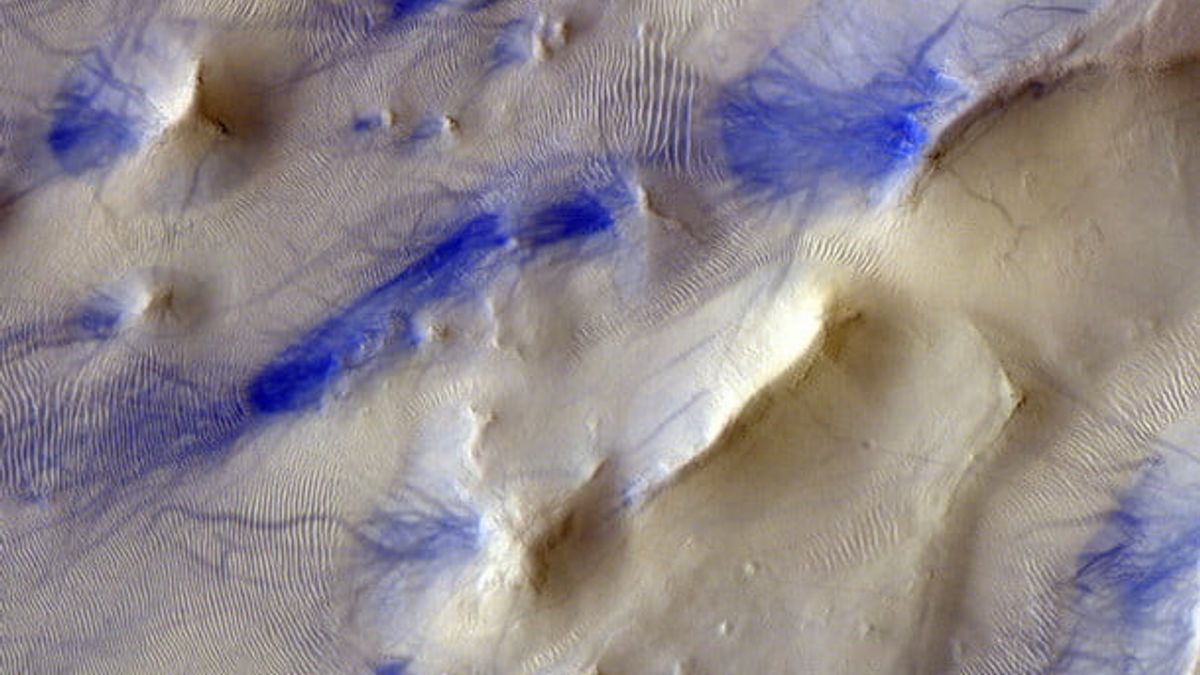JAKARTA – Planet Mars is still an interesting discussion for everyone. No doubt, the European Space Agency (ESA) has just released a very beautiful image of the surface of Mars, showing how the sand craters there were sculpted by the wind.
The image, taken from the CaSSIS orbital camera by ESA and the Roscosmos ExoMars Trace Gas Orbiter (TGO), shows the area of Hooke Crater in the southern highlands of Mars.
This seemingly unusual sight is equivalent to a trajectory on Mars, where a thin atmosphere, strong winds, and large amounts of dust combine to create striking features on the surface.
“This type of scene is similar to the chaotic terrain or the sort of broken and disturbed terrain seen on Mars, where irregular looking rocks of various sizes and shapes of rock, irregular knobs, conical mounds, mountains, flat hills known as mesas are often covered, "said the ESA in its official statement.
“There are about 30 defined chaotic terrain regions on Mars such as Ariadnes Colles, Pyrrhae Regio, and Iani Chaos. While this latest one hasn't been defined as one of these, it certainly looks chaotic."
If you look closely, you can see tendrils or blue lines running across the entire image. These are traces of dust devils, small tornado-like whirlwinds common on Mars.
When hot air on a planet's surface rises rapidly through the cooler air above it, it forms an upward stream of air that can start to spin and create dust devils.
Launching Digital Trends, Monday, February 14th, this swirling column of air travels across the planet's surface, leaving a distinctive trail, before subsides.
ESA notes that the trail seen in this image appears to be moving in a north-south orientation, which could be the result of local winds blowing in that direction.
VOIR éGALEMENT:
Learning more about artificial weather, including its winds, is a key focus of one of the instruments aboard NASA's Perseverance rover, the Mars Environmental Dynamics Analyzer (MEDA).
The MEDA instrument collects data on wind speed and direction, temperature, humidity, and the amount of dust in the atmosphere to better understand how the Martian weather system works.
For your information, TGO arrived on Mars in 2016 and began its full science mission in 2018. The spacecraft not only captures spectacular images like these, but also provides the best inventory of the planet's atmospheric gases, and maps the planet's surface for water-rich locations.
TGO will also provide data relay services for the second ExoMars mission, consisting of the rover Rosalind Franklin and the Kazachok platform, when it arrives on Mars in 2023.
The English, Chinese, Japanese, Arabic, and French versions are automatically generated by the AI. So there may still be inaccuracies in translating, please always see Indonesian as our main language. (system supported by DigitalSiber.id)


















